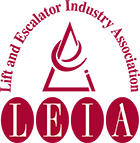For many years lifts and escalators have been fitted with safety devices to remove machinery from operation due to excessive temperature. The new lift standards have required, at least since 1998, that a lift is removed from service at a landing to allow passengers to leave the car should the design temperature of electrical equipment provided with temperature monitoring devices be exceeded. It is therefore possible during particular hot weather that lifts might go out of service at a landing after opening its doors to allow passengers to leave the lift car.
The new equipment standards assume that the ambient temperature of machine rooms and machinery spaces will be maintained between 5°C and 40°C although different temperature limits might have been agreed between the client and new equipment provider. It is a building services function to provide adequate ventilation and to maintain the ambient temperature of the lift areas.
Incident solar radiation, through windows, on to landing doors and entrances or onto controller cabinets located on the lift landings, has been known to cause unsafe high surface temperatures and door distortion or to cause the removal of the lift from service as described above. Such locations may need the use of reflective window surfaces and other means to control the incident level of radiation.
